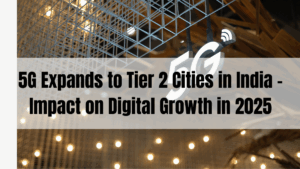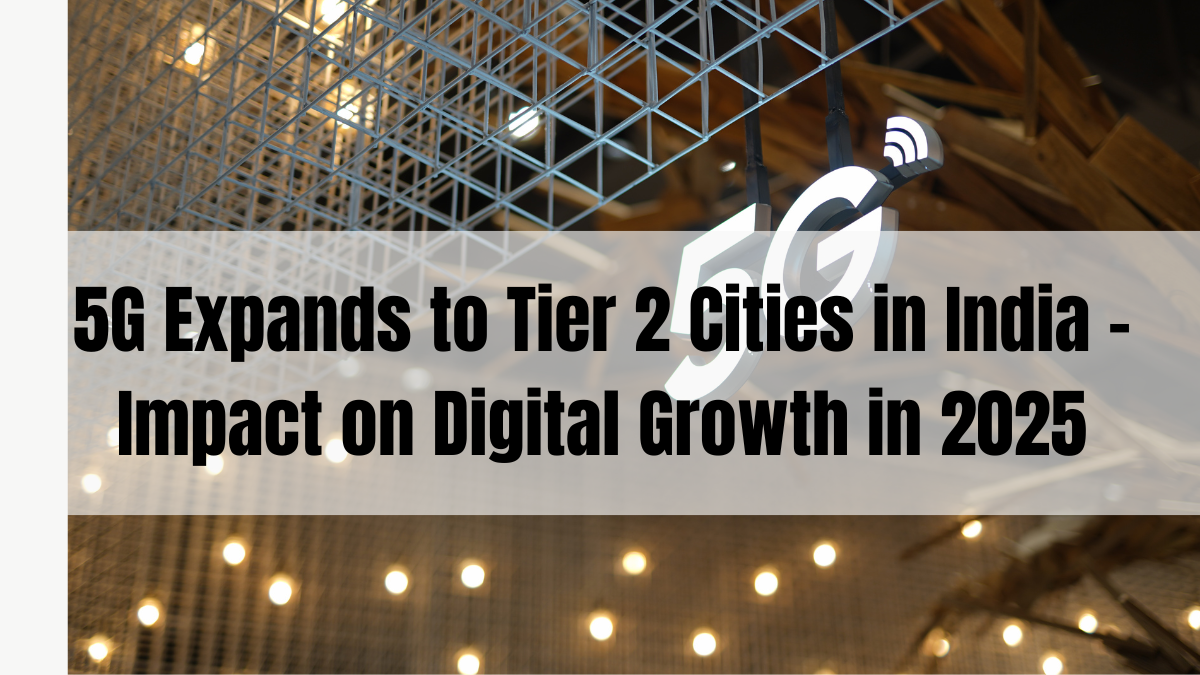India’s digital revolution is no longer limited to metros. In 2025, 5G in Tier 2 cities is unlocking massive digital potential across smaller towns, helping them leapfrog into a hyper-connected era. From remote education to telemedicine and AI-powered businesses, the impact of 5G is being felt strongly in cities like Indore, Coimbatore, Bhubaneswar, Lucknow, Surat, and Mysuru.
The Indian government’s push toward equitable connectivity and private telecom players racing to tap underserved markets has resulted in faster 5G adoption in non-metro regions. These cities are quickly becoming India’s new tech hubs.

Why 5G Rollout in Tier 2 Cities Matters
The shift to 5G in Tier 2 cities is not just a technological upgrade—it’s a social and economic transformation. Here’s why it’s a game-changer:
-
High-speed internet enabling real-time video conferencing and education
-
Low latency networks crucial for healthcare and surveillance systems
-
Support for IoT and smart infrastructure in cities and industries
-
Boost to digital startups and remote work culture
-
Enhanced mobile entertainment and gaming experiences
With speeds reaching 10x faster than 4G, small-town India is getting ready for the digital future.
Key Cities Benefiting from 5G in 2025
As of August 2025, most Tier 2 cities have partial or full 5G coverage. Here are some major regions where 5G in Tier 2 cities is accelerating growth:
| City | State | 5G Status | Key Impact Area |
|---|---|---|---|
| Indore | Madhya Pradesh | Full Rollout | Smart education, e-commerce |
| Lucknow | Uttar Pradesh | Full Rollout | Public Wi-Fi, security networks |
| Coimbatore | Tamil Nadu | Partial Rollout | Manufacturing & AI startup growth |
| Guwahati | Assam | Partial Rollout | Digital literacy, banking access |
| Bhubaneswar | Odisha | Full Rollout | Online services, civic automation |
| Nagpur | Maharashtra | Full Rollout | Transport & infrastructure upgrades |
| Jaipur | Rajasthan | Full Rollout | Retail tech, tourism innovation |
These cities are also receiving state support under the Digital India and Smart Cities missions.
How 5G is Boosting Startups & Innovation in Small Towns
The availability of 5G in Tier 2 cities is helping local entrepreneurs build next-gen businesses in education, healthcare, fintech, and agritech.
Some real-world impacts:
-
Edtech: Startups offering live coaching in HD to rural and semi-urban areas
-
Healthtech: Doctors using telemedicine with stable video feed in remote clinics
-
Retail & Delivery: Faster location tracking and real-time inventory updates
-
Agritech: Smart sensors and drones helping farmers improve productivity
-
Entertainment: OTT apps and cloud gaming now accessible without buffering
This has led to increased job creation, digital upskilling, and a new wave of internet-based microbusinesses.
Telecom Giants Driving the Rollout
Telecom leaders like Jio, Airtel, and Vi are playing a major role in deploying 5G in Tier 2 cities, often in partnership with central and state governments.
-
Jio 5G: Targeting 1,000 cities with standalone 5G network
-
Airtel: Focused on low-latency services for enterprises and education
-
BSNL: Announced low-cost rural 5G solutions with BharatNet integration
-
Vi (Vodafone Idea): Offering selective rollout in industrial belts and smart zones
Combined, these players are creating a competitive environment that ensures faster, cheaper access for users beyond big cities.
Challenges That Still Remain
Despite progress, a few hurdles need to be addressed for full 5G adoption in Tier 2 and 3 regions:
-
High cost of 5G smartphones still limits access in rural belts
-
Infrastructure issues like lack of fiber backbone in some areas
-
Digital literacy gaps among older and lower-income users
-
Device compatibility in non-urban markets
-
Data security and privacy concerns with increased usage
However, both public and private efforts are underway to bridge these gaps and bring uniform digital access to all.
FAQs
Which Tier 2 cities have 5G as of 2025?
Cities like Indore, Lucknow, Coimbatore, Jaipur, Bhubaneswar, and Nagpur have either full or partial 5G coverage in 2025.
Is 5G speed really better in smaller towns?
Yes. In less congested Tier 2 cities, 5G often delivers better speeds and lower latency compared to crowded metro zones.
How is 5G helping students and job seekers in small towns?
5G enables smoother online classes, skill development, government exam preparation, and remote job opportunities with minimal buffering.
Do all telecom operators offer 5G in Tier 2 cities?
Most leading providers like Jio and Airtel have rolled out 5G in major Tier 2 cities. BSNL and Vi are expanding gradually.
Will 5G replace broadband in small towns?
For many users, especially mobile-first ones, 5G offers speeds comparable to home broadband, making it a convenient alternative.
Click here to know more.
